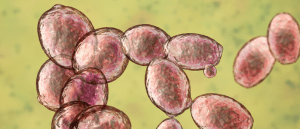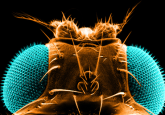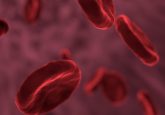Unraveling molecular signaling mysteries using synthetic enzymes

Researchers synthesize enzymes to learn more about a signaling protein involved in the development of muscle, bone and blood in vertebrate embryos.
A team of bioengineers at the University of Texas at Dallas (TX, USA) have developed synthetic enzymes that can alter the formation and function of Vg1, a signaling protein involved in vertebrate embryo tissue development. Using these synthetic enzymes, the researchers hope to learn the molecular rules governing signal formation in the developing vertebrate and use this information to engineer mechanisms for treating or preventing disease.
“We’re interested in how synthetic enzymes might be used to control natural proteins, including disease-causing proteins,” commented first author P.C. Dave Dingal.
The team utilized zebrafish, due to their 70% genomic similarity with humans and their convenient size and quick growth, to investigate how two proteins involved in organogenesis – Vg1 and Nodal – interact. Vg1 is inactive until it binds Nodal, forming a heterodimer that targets embryonic cells when secreted, signaling differentiation. They found that there are chaperone proteins bound to Vg1 to keep it inactive, which are only removed when Nodal is introduced.
 Researchers are one step closer to synthesizing a complete yeast genome
Researchers are one step closer to synthesizing a complete yeast genome
A yeast strain with 31% synthetic DNA has been successfully produced, displaying normal morphology.
However, dimerization isn’t enough to activate the pair. The Vg1 portion of the heterodimer must also undergo additional processing, during which unnecessary amino acids are cleaved by enzymes, in the Golgi apparatus. To investigate this process, the team used the Synthetic Processing system and a virus-derived cleaving enzyme to develop a synthetic enzyme that could remove amino acids from Vg1 in the embryonic zebrafish model.
These experiments revealed that Vg1–Nodal heterodimers don’t need to have undergone cleaving prior to being released from the cell to be able to bind to the target cell. However, Vg1 does need to have undergone cleaving in the additional processing stage for signaling on target cells to occur.
The team plans to continue this research to understand more about the molecular rules that govern chaperone protein activity and the role these proteins play in the formation of signaling complexes. By digging deeper into how these complexes form and the enzymes necessary for their successful signaling, the researchers hope to be able to influence cellular functions. Dingal concluded, “our hope is to build biological circuits that, ultimately, we can introduce into cells and imbue them with new functions, like being able to detect cancer or resolve cellular disorders at the molecular level.”





